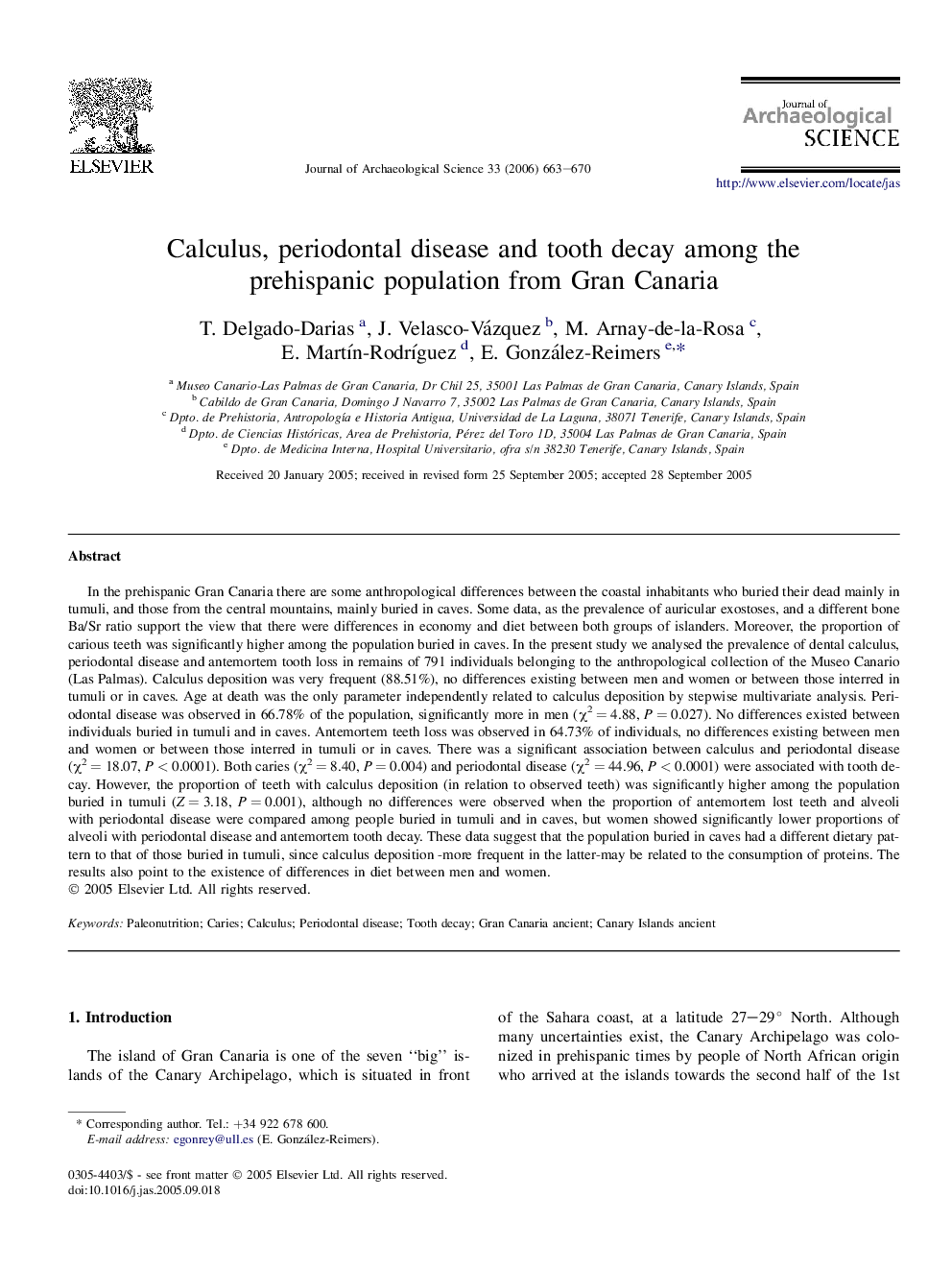| Article ID | Journal | Published Year | Pages | File Type |
|---|---|---|---|---|
| 1036690 | Journal of Archaeological Science | 2006 | 8 Pages |
In the prehispanic Gran Canaria there are some anthropological differences between the coastal inhabitants who buried their dead mainly in tumuli, and those from the central mountains, mainly buried in caves. Some data, as the prevalence of auricular exostoses, and a different bone Ba/Sr ratio support the view that there were differences in economy and diet between both groups of islanders. Moreover, the proportion of carious teeth was significantly higher among the population buried in caves. In the present study we analysed the prevalence of dental calculus, periodontal disease and antemortem tooth loss in remains of 791 individuals belonging to the anthropological collection of the Museo Canario (Las Palmas). Calculus deposition was very frequent (88.51%), no differences existing between men and women or between those interred in tumuli or in caves. Age at death was the only parameter independently related to calculus deposition by stepwise multivariate analysis. Periodontal disease was observed in 66.78% of the population, significantly more in men (χ2 = 4.88, P = 0.027). No differences existed between individuals buried in tumuli and in caves. Antemortem teeth loss was observed in 64.73% of individuals, no differences existing between men and women or between those interred in tumuli or in caves. There was a significant association between calculus and periodontal disease (χ2 = 18.07, P < 0.0001). Both caries (χ2 = 8.40, P = 0.004) and periodontal disease (χ2 = 44.96, P < 0.0001) were associated with tooth decay. However, the proportion of teeth with calculus deposition (in relation to observed teeth) was significantly higher among the population buried in tumuli (Z = 3.18, P = 0.001), although no differences were observed when the proportion of antemortem lost teeth and alveoli with periodontal disease were compared among people buried in tumuli and in caves, but women showed significantly lower proportions of alveoli with periodontal disease and antemortem tooth decay. These data suggest that the population buried in caves had a different dietary pattern to that of those buried in tumuli, since calculus deposition -more frequent in the latter-may be related to the consumption of proteins. The results also point to the existence of differences in diet between men and women.
